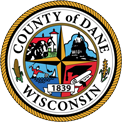County Board Approves Spending Plan for 2017
November 14, 2016
County Board Chair Sharon Corrigan, 608.333.2285
County Board
Focus on Wage Equity, Criminal Justice Reform and Local Foods
With an emphasis on boosting wages for the lowest-paid workers and reducing the jail population for non-violent offenders, the Dane County Board of Supervisors on Monday approved an $587.1 million operating budget for 2017 along with a capital budget of about $50.5 million.
“This budget reflects the shared priorities of fairness and equity while always keeping in mind the impact on taxpayers,” said County Board Chair Sharon Corrigan of Middleton.
The budget passed on a 34-2 vote, with one member excused, and now awaits the final signature of County Executive Joe Parisi. It will raise taxes on the average home in Dane County by about 2.83 percent.
“By listening to our constituents over the last six weeks, I believe the Board has taken the County Executive’s strong proposed budget and made it even better,” said Corrigan.
The 2017 spending plan calls for a 3 percent pay increase for all county workers beginning in January and offers a 2 percent hike for county human services contractors. It also begins the phase-in toward a $15 an hour minimum wage for all those working for the county by 2022.
“This budget invests directly in those who make Dane County a great place to live,” said Supervisor Jenni Dye of Fitchburg, chair of the Personnel and Finance Committee. “It puts us on the path to a $15 minimum wage and provides a raise for our hardworking employees while giving a long-overdue increase to those working at non-profits who deliver many of our critical human services to seniors and the disabled.”
In addition to upgrading the pay scale for workers, the budget includes several initiatives aimed at criminal justice reform and racial equity. Those include:
-
Creation of a Community Service Program so offenders can work off their sentence rather than face fines or time in jail.These programs have been shown to provide positive connections in the community so participants are less likely to reoffend.
-
Creation of a court mentoring program to help defendants wind their way through the criminal justice system by keeping track of required appointments and appearances.
-
Funding for the county-wide expansion of the Community Restorative Court beyond south Madison.The number of cases is expected to grow significantly with the county-wide expansion.
-
Funding for a Juvenile Restorative Justice program.Previously funded by grants, the program has shown great promise in getting youths to take responsibility for their actions and repair the damage to individuals or their community.The City of Madison is also considering financial assistance.
“I am delighted the County Board was able to add a new community services coordinator as suggested by our local judges,” said Supervisor Paul Rusk of Madison, chair of the Public Protection and Judiciary Committee. “In many cases, community service is an excellent alternative to jail time or fines, making it possible for folks to make the life changes they need to get back on track.”
Rusk also applauded creation of the mentoring program to help offenders negotiate their way through the criminal justice system and avoid warrants for failure to appear.
“By enhancing the successful ‘buddy system’ to get folks to court, enhancing the District Attorney’s resources and paving the way to expand resources in the Community Restorative Court, we hope to reduce Dane County’s racial disparities that have troubled many of us for far too long,” he said.
The Board also added funding for low income residents to participate in Community Supported Agriculture (CSA) programs to increase access to fresh, healthy produce; money for community gardens in communities outside Madison and funding for a pilot program to encourage farmers to become certified organic farmers.
Environmental initiatives added to the budget included doubling the funding for urban water quality grants to improve storm water drain outlets and funding for a chloride study to determine the impact of winter street salt and salt from water softeners on drinking waters.
##30##

